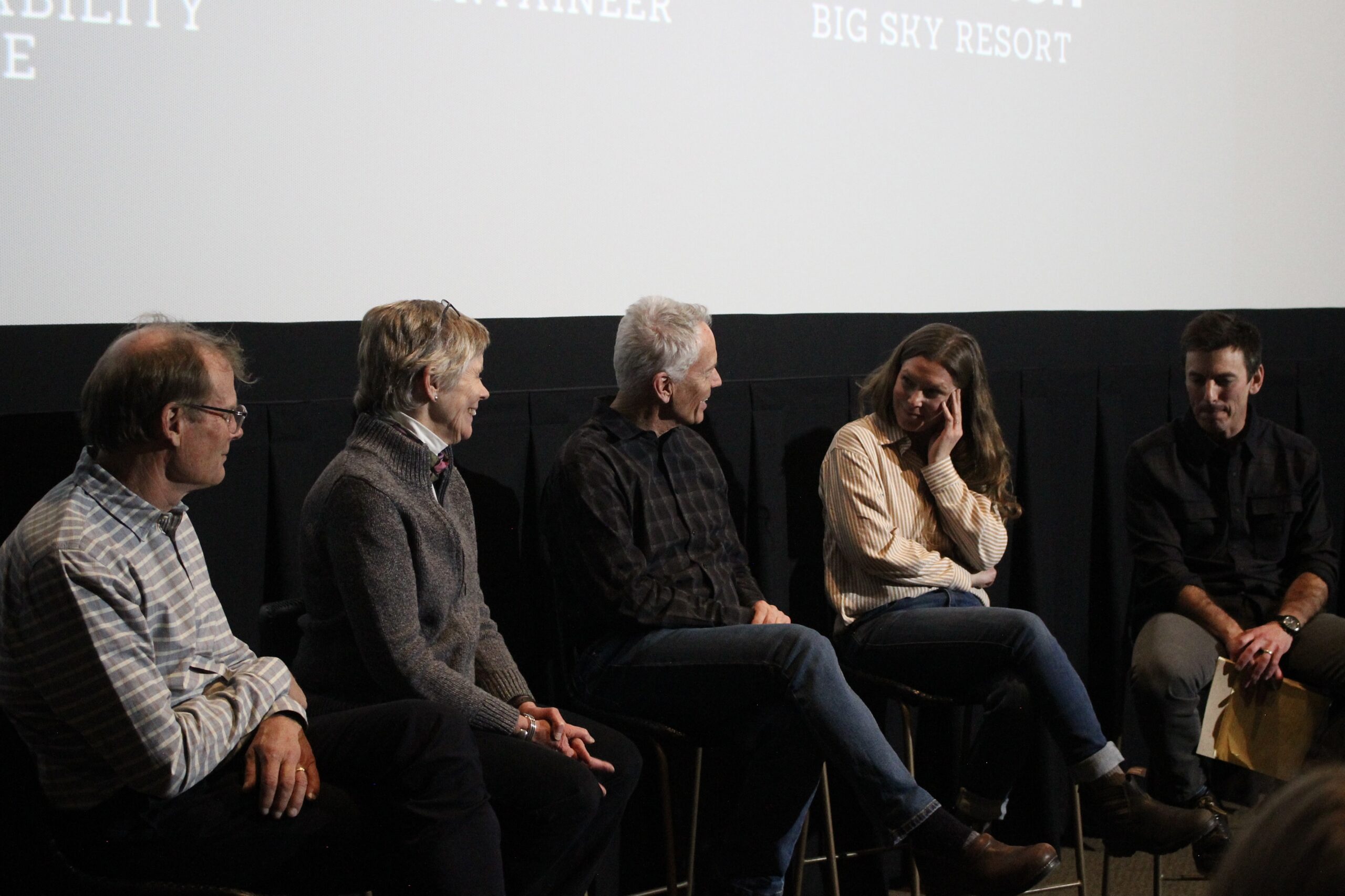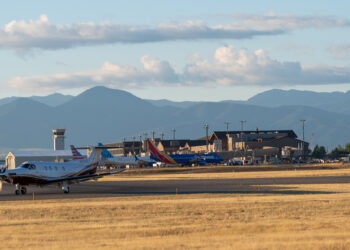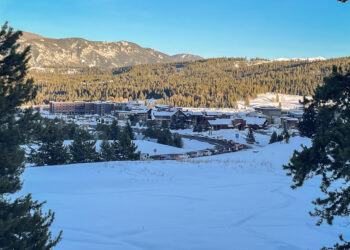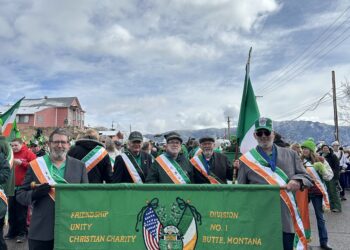Diverse panel discusses regional issues at CAP launch event
By Jack Reaney STAFF WRITER
On Thursday night, Big Sky Sustainability Network Organization held a launch event for its Climate Action Plan, including a keynote speech from mountaineer Conrad Anker and an expert panel discussion.
The discussion panel included Big Sky Resort’s president and COO Taylor Middleton, Montana State University ecology professor and author Cathy Whitlock, rancher and Western Sustainability Exchange board member Malou Anderson-Ramirez, and North Face and Protect Our Winters athlete Conrad Anker. The event was held at the Independent, and while the CAP was not discussed directly, Big Sky SNO director of community sustainability Lizzie Peyton encouraged citizens to check it out online.
“We didn’t want to get into the weeds of the project tonight, because we would have really bored everybody,” Peyton told EBS. “There’s 96 pages of dense information in there—which we tried to make look fun, and which our graphic designer did an exceptional job of. You can find it [online] and it’s available to everybody.”
Peyton pointed out that the subtitle is “collaborating on our future,” as collaboration is the most important part of the future of the plan’s implementation. At the launch event, she said it was awesome to see the diversity of folks in the room, from community leaders to longtime locals and engaged citizens.
“Hope is a verb with its sleeves rolled up,” Peyton told the audience on Thursday, quoting environmentalist David Orr. Every day, she feels “hopeful that we’re making a difference, and daunted that we’re not doing enough.
“If you have ideas, we are all ears. If you have expertise to lend, we would love to engage with you.”
CAP at a glance
“This is a comprehensive Big Sky community plan,” the report states. As such, the report says no individual nonprofit, business or district is responsible for putting the plan into action. That will only happen with a collective, community-wide effort.
Community action items defined in the CAP are divided into four “Targeted Improvement Priorities”: energy and buildings, transportation, consumption and waste and natural environment. The report gives suggestions for each category, such as obtaining a cost-free home energy audit from NorthWestern Energy and adjusting water faucets and fixtures to reduce water use.
The report states that Big Sky SNO and community partners will take immediate action, and plan to “achieve significant progress by the end of 2035.”
To improve energy and buildings, one strategy identified (pg. 51) is to create a “green build toolkit” for local architects, engineers, contractors and homeowner associations. A tiered standard “green leaf” would be awarded to those who adhere best to the toolkit. The plan aims to create a strategy to reduce the amount of time and resources spent building onsite and commuting, including local batch plants and modular or panelized construction.
Natural environment plans revolve around carbon sequestration and supporting regenerative ranching, as well as water education and conservation, and wildfire mitigation and planning. The plan also encourages homeowner associations to adopt “no sod” policies.
The CAP suggests increasing renewable energy by applying for grants to implement solar energy and other projects. The plan includes strengthening relationships with the communities of Missoula, Helena and Bozeman in order to more effectively lobby NorthWestern Energy to develop sustainable energy sources.
Based on a community inventory of greenhouse gas emissions using 2018 as a baseline year, data shows that 33.1% of emissions come from residential energy, 32.7% from transportation, 16.1% from commercial energy and 14.1% from industrial energy. Page 31 of the report describes “business as usual,” or taking no mitigation action—greenhouse gas emissions would increase by 92% by 2050, based on a compounding annual increase of 3.3% until 2035 and 2.1% thereafter.
The CAP also included a study for the Missouri Headwaters—spanning southwest Montana to Three Forks—which saw a 2.6-degree temperature increase between 1950 and 2018, with another 5.3 degrees forecasted by 2100. Annual precipitation is projected to increase by 9% on top of the 4% increase since 1950, but more will fall in the form of rain. That will decrease snowpack by 43% and early summer runoff by 36%, ultimately hurting snowpack-dependent water supply.
The combination of warmer, drier weather and decreased water access will increase the hazard of wildfire, the report states. The change will also affect local tourism and ski industry.
Community members interested in joining a working group—each of which focuses on a specific targeted improvement priority—are encouraged to email Big Sky SNO.
Expert voices
“All of us in this room, just by dint of living in Montana in a cold climate enjoying the sports we do, we are climate gluttons,” Anker said. “We use a lot of carbon. So how do we address our own individual use?”
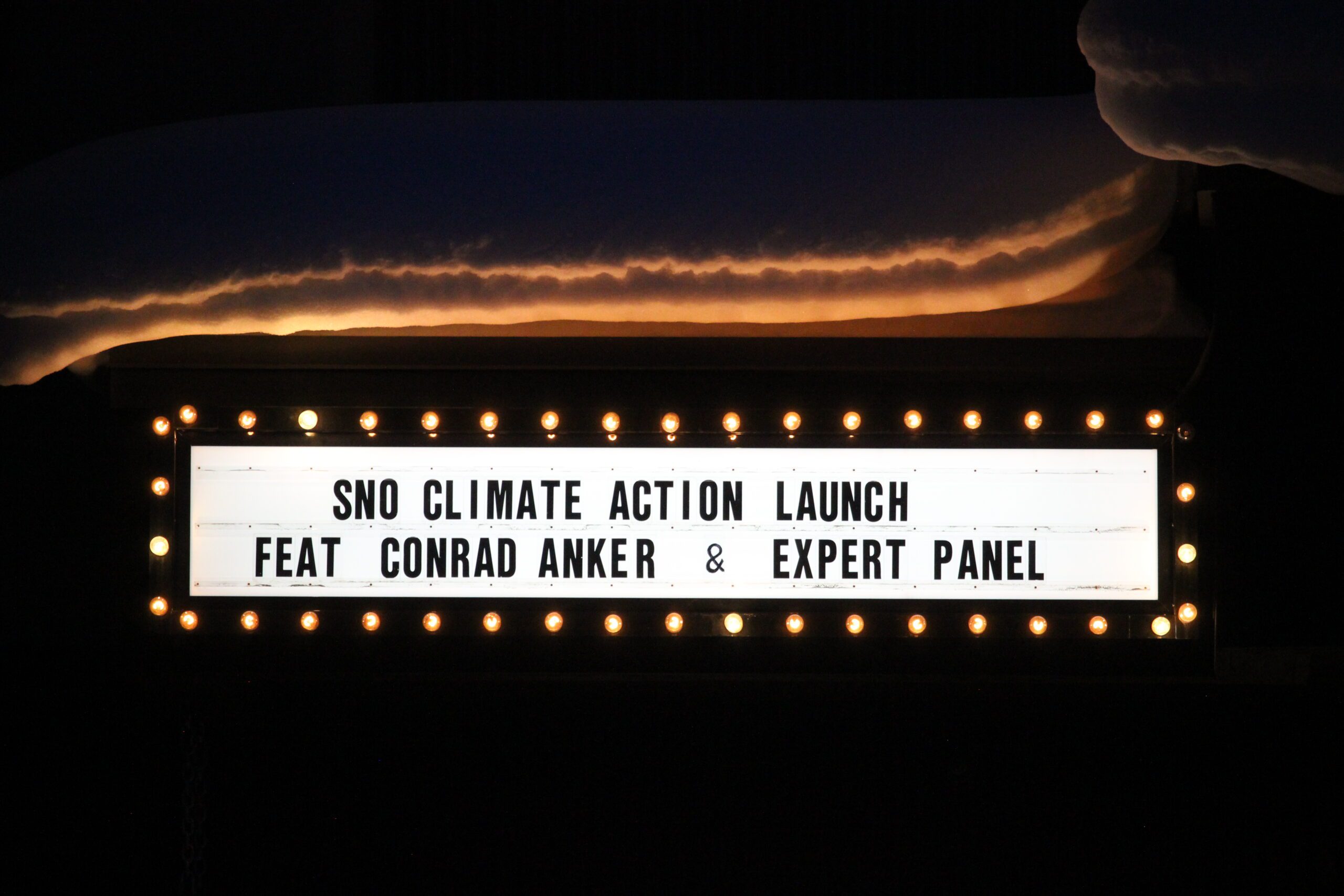
Anker’s speech and the panel discussion from the Feb. 16 launch event are posted on YouTube.
In his speech, Anker shared his personal background as an outdoorsman, and showed time lapse videos of Arctic and Himalayan glaciers receding, melting and moving between 2010 and 2012.
The panel discussion was moderated by Joe O’Connor, Big Sky resident and managing editor of Mountain Journal.
Peyton said the panel was successful in representing the variety of roles that community members need to play in the local climate solution.
“You know, somebody who’s a rancher versus somebody who’s running Big Sky Resort. Someone who’s an athlete and someone who’s a scientist,” she said. “My goal with the panel to have a mix of perspectives.”
O’Connor began by saying that perhaps Big Sky can be a model for other ski towns, or even a model for the world. He began the discussion by asking each panelist: What are we sustaining, and what are we not sustaining?

Anker said we need to start by sustaining air. Whitlock cited Montana’s unusual constitutional right to clean and healthful environment. Middleton said snow is crucial. Ramirez said clean air, clean water and preserving future human needs without impeding needs today.
O’Connor then asked Middleton—a 42-year employee and leader of Big Sky Resort—how the climate has changed since the 1980s. Middleton said it was a lot colder back then.
“You felt it,” he said. “Although we’ve had cold weather this winter—we’ve had two 30 or 40 below days and nights—we used to have 30 and 40 below weeks… That kind of helps our resort business model, for now. But the long term, that’s not sustainable.”
O’Connor followed up with a question on the resort’s Forever Project, which commits to net-zero emissions by 2030. Middleton called it a “big, hairy, audacious goal” which the resort is working hard to reach.
“[Boyne Resorts owns] about 10 ski resorts across the 45th parallel of North America. We know that we are part of the problem in creating greenhouse gases, and that we need to be part of the solution,” Middleton said, later adding that Boyne completed an audit of their emissions, which showed 50% of their footprint pertains to electricity.
Later in the discussion, O’Connor asked Middleton about employee housing with regards to carbon impacts of commuters living in the Gallatin Valley.
Middleton responded that while opting to build employee beds is costly—as hotels or condominiums are far more profitable—it benefits the community, the employee, the employer, the atmosphere and climate.
In 1971, O’Connor said, Chet Huntley called Big Sky the greatest thing to ever happen to Montana.
“[Tourists] come and spend their money, leave a few tracks in the snow and go back home,” O’Connor quoted from Huntley. “What’s so wrong with that? Big Sky will demonstrate that you can install a first-rate recreational development in a pristine area without any damage to the environment.”
With regards to the Gallatin River’s impaired status in 2022, population that has roughly doubled in Gallatin County since 1990 and in Big Sky since 2010, and dramatic increases in Yellowstone National Park visitation since 1970, O’Connor asked Whitlock about the correlation between a warming climate and growing human presence.
“I think we all know what’s going on, right?” Whitlock said. “People are moving here because they want to take advantage of the amenities… What worries me, and probably worries all of you, is that [increasing population and usage] is having a huge impact on the environment. And the environment is already under stress from climate change.”
‘That sounds a lot like Paradise, California to me’
Later in the discussion, O’Connor prompted Whitlock on the increasing significance of wildfire in the West.
Whitlock said a variety of changing factors point to more fires, mostly out of human control. But humans can control wildland-urban interface, seen all over Big Sky, by building and landscaping mindfully, and preparing for wildfire.
“What are the evacuation plans for a place like Big Sky, where there’s really one major road up the hill?” she said. “That sounds a lot like Paradise, California to me. But I’m sure people in Big Sky are thinking about that. We have to be ready for [wildfires], because they’re coming.”
O’Connor asked Ramirez about the importance of language and terminology.
“It’s extremely important,” she responded. “It’s amazing how divisive we can be without realizing it and how language can make almost anything political, which shouldn’t be political. In the working groups I’m in with ranchers, it’s really important to not talk about the target words, as they say the trigger words. We don’t even say ‘sustainability’ in working lands groups, we don’t talk about ‘climate change,’ we certainly don’t say ‘global warming.’”
Ramirez, a lifelong family rancher in Tom Miner Basin, prefers specific terms such as “drought resilience,” practical discussions of “biodiversity” and mimicking successful ecosystems. She focuses on regenerative agriculture in working groups of ranchers.
“It’s all in the language in a lot of ways, especially with ranchers and farmers,” she said. Ranchers and farmers are acknowledging changes in the land, especially around water, she added.
O’Connor asked Anker what changes he’s seen in the Himalaya.
“In the lower elevations, deforestation is present,” Anker said. “The land is tired, the land is like a mule that’s been worked too hard and is not doing well. Higher up in elevation, glacial recession is obvious, we have historical repeat photography.”
In Nepal and Himalayan countries, Anker said there is no debate about climate change. He called Nepal a consequence nation, where they will be paying for the consequences of carbon intake.
O’Connor also asked Anker, a resident of Bozeman for more than 20 years, what concerns him most about southwest Montana’s changing climate.
Anker said it’s easy to take the accessibility of public lands in the West for granted. He added that he avoids viewing crowded outdoor recreation as negative, instead focusing on the positive and uplifting experience of people he meets. When outdoorspeople connect through experiencing nature, they are more likely to advocate for a healthier planet, Anker said.
“Any way we try to work through climate and the challenges we’re facing is going to be a lot of work. There’s not an easy solution,” he said. “Everything has a little bit of a compromise. But if we work together, that’s where the optimism comes in.”



